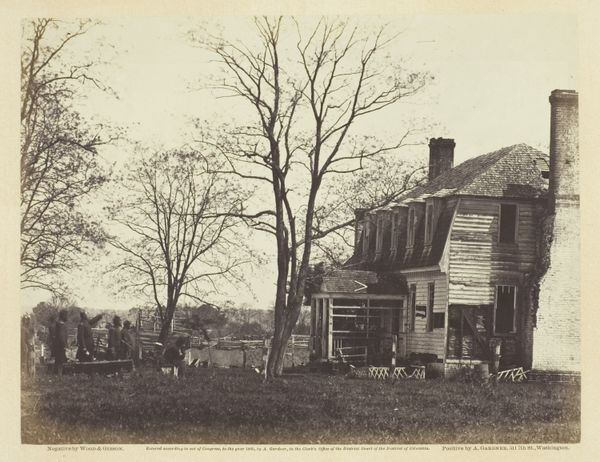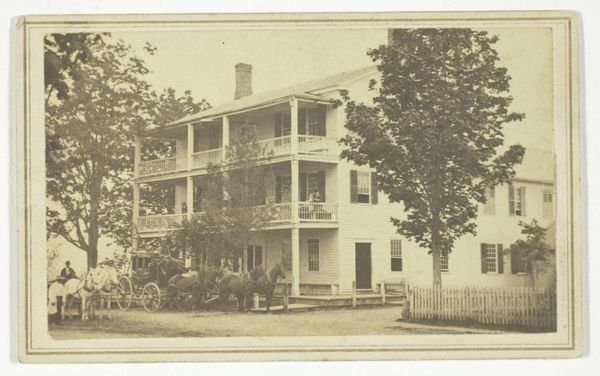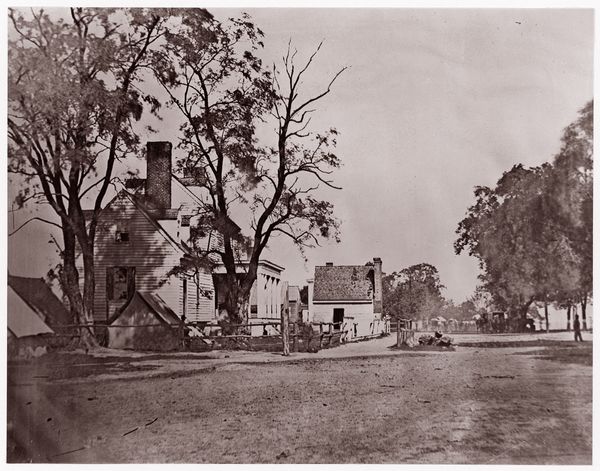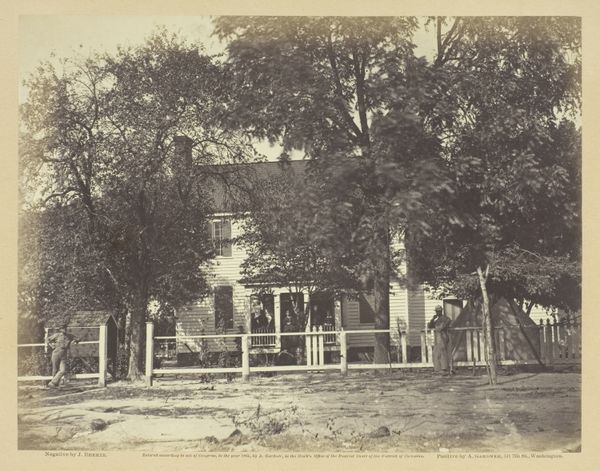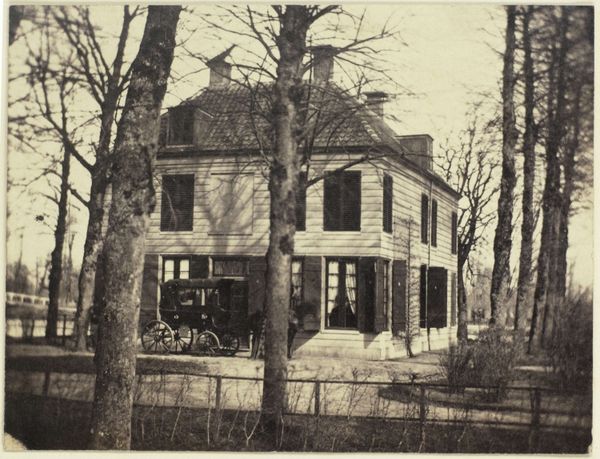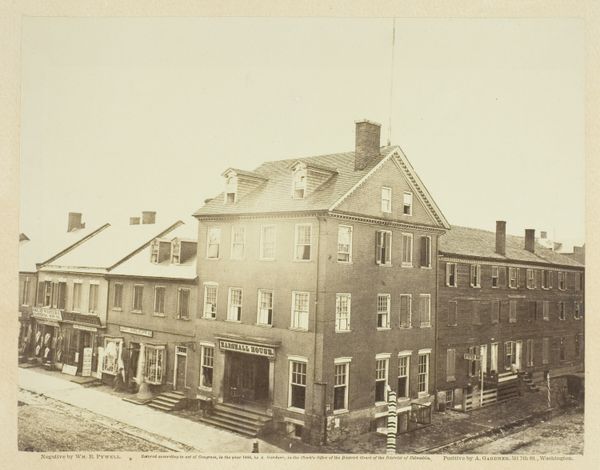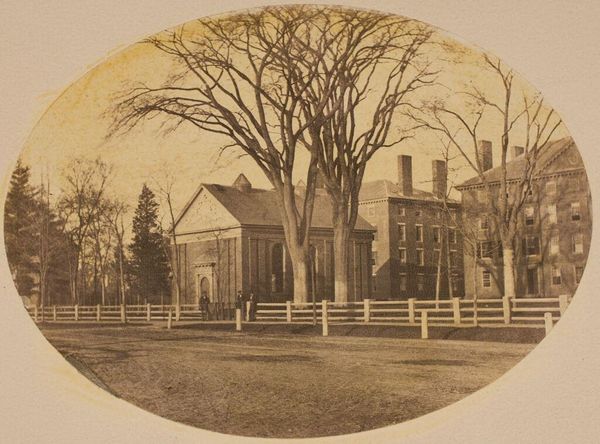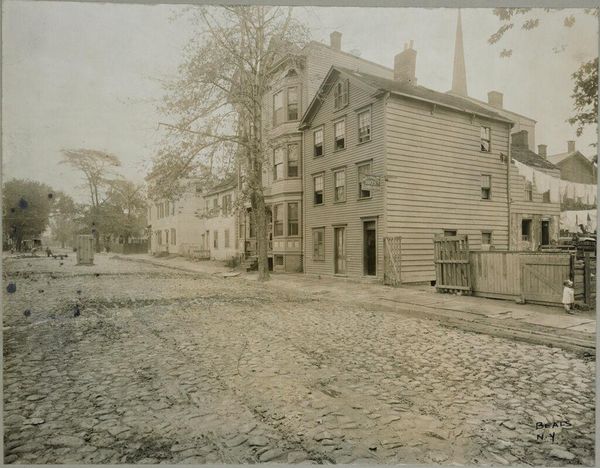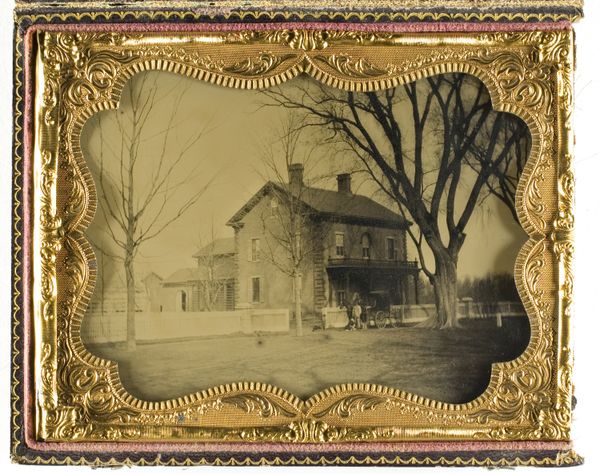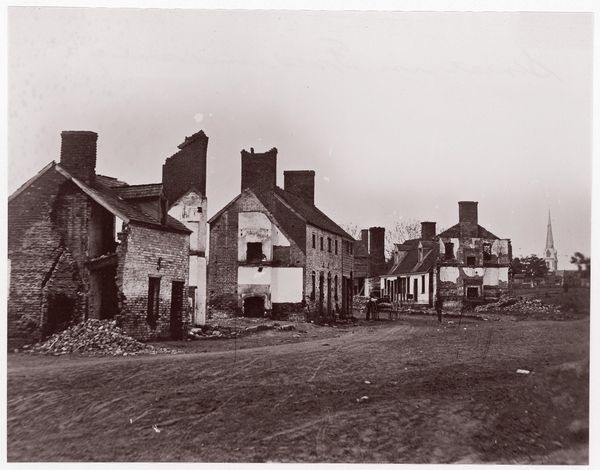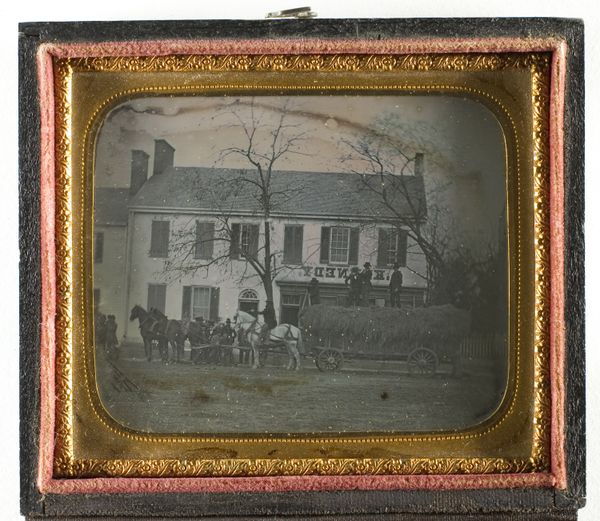![[Headquarters of Captain E. E. Camp, Assistant Quartermaster at City Point, Virginia] by Andrew Joseph Russell](/_next/image?url=https%3A%2F%2Fd2w8kbdekdi1gv.cloudfront.net%2FeyJidWNrZXQiOiAiYXJ0ZXJhLWltYWdlcy1idWNrZXQiLCAia2V5IjogImFydHdvcmtzL2FjZjlkNGM0LTMxNDItNDAzZC05NTUyLTA5OTY4ODdmZjdiZS9hY2Y5ZDRjNC0zMTQyLTQwM2QtOTU1Mi0wOTk2ODg3ZmY3YmVfZnVsbC5qcGciLCAiZWRpdHMiOiB7InJlc2l6ZSI6IHsid2lkdGgiOiAxOTIwLCAiaGVpZ2h0IjogMTkyMCwgImZpdCI6ICJpbnNpZGUifX19&w=3840&q=75)
[Headquarters of Captain E. E. Camp, Assistant Quartermaster at City Point, Virginia] 1861 - 1865
0:00
0:00
photography, gelatin-silver-print
#
portrait
#
black and white photography
#
war
#
landscape
#
outdoor photograph
#
photography
#
gelatin-silver-print
#
monochrome photography
#
men
#
realism
#
building
#
monochrome
Copyright: Public Domain
Curator: What strikes you first about this gelatin-silver print, titled "[Headquarters of Captain E. E. Camp, Assistant Quartermaster at City Point, Virginia]," created between 1861 and 1865 by Andrew Joseph Russell? Editor: It’s stark, almost ghostly. The way the light renders the clapboard of the building...it speaks of an austere functionality. Very utilitarian, very practical. Curator: Exactly. Russell was a master of capturing the material reality of the Civil War. Think about the labor involved in constructing these buildings, providing logistics for a massive war effort. The photograph isn't just a depiction; it’s a document of industrial mobilization, reflecting on the resources channeled. Editor: But the figures themselves! Clustered on the porch, they have a stillness. Almost like a posed tableau. It pulls me into a specific narrative beyond just material concerns. There's an echo of classical war imagery. It makes me wonder what visual cues he drew on. Curator: An interesting perspective. I would rather consider what processes determined who appeared in the image, or how photographers positioned themselves and subjects according to established social protocols. The lack of adornment speaks volumes about wartime constraints. Editor: Yet, these constraints shaped meaning too. It speaks to urgency, resolve, and maybe a degree of enforced equality. Consider how their arrangement creates a visual hierarchy of rank and importance, a micro-society visible in the photograph. Curator: Agreed. Thinking about photographic processes and chemical supplies, a limited supply influences aesthetic choices; the restrictions became part of its character, marking that image a product of that specific historical intersection. Editor: So, we’re both seeing the context, but approaching it from different angles. The interplay between the individuals and the structures is interesting and perhaps not coincidental. Curator: Indeed, both can exist to inform interpretations as one traces materials, class structures, labor, and even industrial innovations to the art and its moment of creation. Editor: Well, thank you. This photograph makes you think about everything from classical ideals to pragmatic strategies within its deceptively straightforward form.
Comments
No comments
Be the first to comment and join the conversation on the ultimate creative platform.

